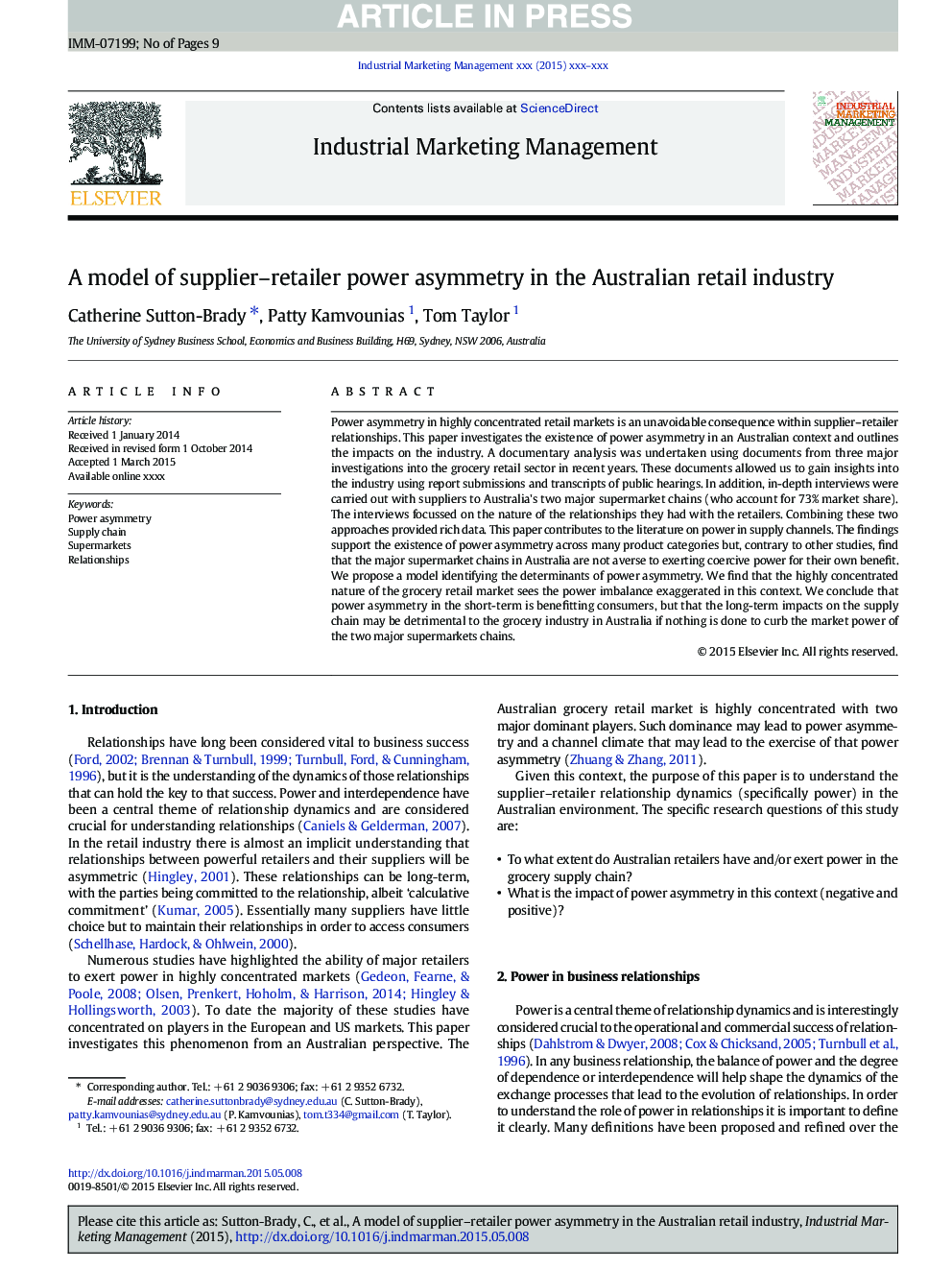| Article ID | Journal | Published Year | Pages | File Type |
|---|---|---|---|---|
| 7432616 | Industrial Marketing Management | 2015 | 9 Pages |
Abstract
Power asymmetry in highly concentrated retail markets is an unavoidable consequence within supplier-retailer relationships. This paper investigates the existence of power asymmetry in an Australian context and outlines the impacts on the industry. A documentary analysis was undertaken using documents from three major investigations into the grocery retail sector in recent years. These documents allowed us to gain insights into the industry using report submissions and transcripts of public hearings. In addition, in-depth interviews were carried out with suppliers to Australia's two major supermarket chains (who account for 73% market share). The interviews focussed on the nature of the relationships they had with the retailers. Combining these two approaches provided rich data. This paper contributes to the literature on power in supply channels. The findings support the existence of power asymmetry across many product categories but, contrary to other studies, find that the major supermarket chains in Australia are not averse to exerting coercive power for their own benefit. We propose a model identifying the determinants of power asymmetry. We find that the highly concentrated nature of the grocery retail market sees the power imbalance exaggerated in this context. We conclude that power asymmetry in the short-term is benefitting consumers, but that the long-term impacts on the supply chain may be detrimental to the grocery industry in Australia if nothing is done to curb the market power of the two major supermarkets chains.
Related Topics
Social Sciences and Humanities
Business, Management and Accounting
Marketing
Authors
Catherine Sutton-Brady, Patty Kamvounias, Tom Taylor,
